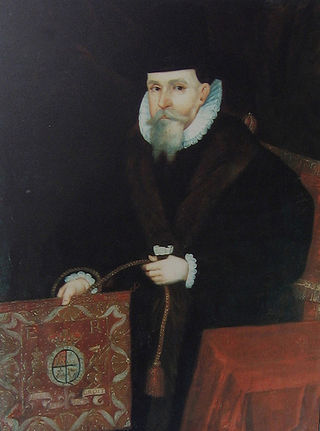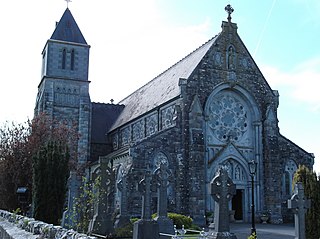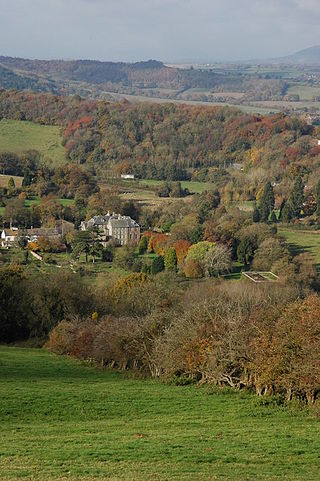
Adam Loftus was Archbishop of Armagh, and later Dublin, and Lord Chancellor of Ireland from 1581. He was also the first Provost of Trinity College Dublin.
The Lord High Chancellor of Ireland was the highest judicial office in Ireland until the establishment of the Irish Free State in 1922. From 1721 to 1801, it was also the highest political office of the Irish Parliament: the Chancellor was Speaker of the Irish House of Lords. The Lord Chancellor was also Lord Keeper of the Great Seal of Ireland. In all three respects, the office mirrored the Lord High Chancellor of Great Britain.
Thomas Charlton was Bishop of Hereford, Lord High Treasurer of England, Lord Privy Seal, and Lord Chancellor of Ireland. He is buried in Hereford Cathedral in Hereford, Herefordshire, England.
The Master of the Rolls in Ireland was a senior judicial office in the Irish Chancery under English and British rule, and was equivalent to the Master of the Rolls in the English Chancery. Originally called the Keeper of the Rolls, he was responsible for the safekeeping of the Chancery records such as close rolls and patent rolls. The office was created by letters patent in 1333, the first holder of the office being Edmund de Grimsby. As the Irish bureaucracy expanded, the duties of the Master of the Rolls came to be performed by subordinates and the position became a sinecure which was awarded to political allies of the Dublin Castle administration. In the nineteenth century, it became a senior judicial appointment, ranking second within the Court of Chancery behind the Lord Chancellor of Ireland. The post was abolished by the Courts of Justice Act 1924, passed by the Irish Free State established in 1922.

Robert Bourchier, 1st Baron Bourchier was Lord Chancellor of England, the first layman to hold the post.

Thomas Cantock, Quantock or Cantok was an English-born cleric and judge in medieval Ireland, who held the offices of Bishop of Emly and Lord Chancellor of Ireland.
Sir John Alan was a leading English-born statesman in sixteenth century Ireland. He was a member of the Irish House of Commons, and held the offices of Master of the Rolls in Ireland, Chancellor of the Exchequer of Ireland and Lord Chancellor of Ireland. Though he was childless himself, one of his brothers, William, founded a prominent landowning dynasty in County Kildare. The family's holdings included lands at Celbridge, St. Wolstan's and Kilteel, County Kildare, as well as substantial lands in County Dublin. They also acquired a baronetcy.
John de St Paul, also known as John de St. Pol, John de Owston and John de Ouston, was an English-born cleric and judge of the fourteenth century. He was Archbishop of Dublin 1349–62 and Lord Chancellor of Ireland 1350–56. He had previously been Master of the Rolls in England 1337–40. Apart from a brief period of disgrace in 1340, he enjoyed the confidence of King Edward III. He was described as a zealous supporter of English rule in Ireland, but also as a pragmatic statesman who was willing to conciliate the Anglo-Irish ruling class. He did much to enlarge and beautify Christ Church, Dublin, although virtually no trace of his improvements survive, as they were destroyed by the Victorian rebuilding of the cathedral.

Adam de Harvington, also called Adam de Herwynton (c.1270-c.1345) was a fourteenth-century Crown official and judge who had a successful career in both England and Ireland. He held office as Chief Baron of the Irish Exchequer and Lord Treasurer of Ireland, and as Chancellor of the Exchequer of England, and acquired considerable wealth.
Nicholas de Balscote was an English-born official and judge in fourteenth-century Ireland. He attained high judicial office, but his career was damaged by a quarrel with King Edward II.

Thomas de Everdon was an English-born cleric and judge, who was a trusted Crown official in Ireland for several decades.
John de Burnham, or John Brunham was an English-born cleric, judge and Crown official who spent much of his career in Ireland. He held office as Lord High Treasurer of Ireland and Chief Baron of the Irish Exchequer. He spent many years defending himself against charges of corruption, which seem to have been the invention of malicious colleagues.

Thomas de Cottingham was an English-born cleric and judge who held the office of Master of the Rolls in Ireland.
Robert de Emeldon, or Embleton was an English-born Crown official and judge who spent much of his career in Ireland. He held several important public offices, including Attorney-General for Ireland, Lord High Treasurer of Ireland and Chief Baron of the Irish Exchequer. He was a turbulent and violent man, who was guilty of at least one homicide, was imprisoned for a number of serious crimes including rape and manslaughter, and had a reputation for corruption: but he was a royal favourite of King Edward III and was thus able to survive his temporary disgrace in the early 1350s.

John de Troye was a Welsh-born Crown official and judge in fourteenth century Ireland, who held the offices of Chancellor of the Exchequer of Ireland and Lord Treasurer of Ireland. He was also a leading ecclesiastic, whose most senior clerical office was Chancellor of St. Patrick's Cathedral, Dublin. He was a notable pluralist.
Thomas Cusacke, Cusack or de Cusack was an Irish barrister and judge, who held the offices of Attorney General for Ireland and Lord Chief Justice of Ireland. He should not be confused with his much younger cousin Sir Thomas Cusack, Lord Chancellor of Ireland, who was a child of about six when the elder Thomas died.
Thomas Archbold, or Thomas Galmole was a goldsmith and silversmith, who also qualified as a lawyer, and rose to become a senior Crown official and judge in Ireland in the late fifteenth and early sixteenth centuries. He was Master of the Mint in Ireland for many years.
William Alysaundre or Alesander was an Irish judge and Crown official in the reigns of King Edward I of England and his son Edward II.

Adam de Lymbergh was an English Crown official and judge of the early fourteenth century, who served two Kings with distinction. He was Lord Chancellor of Ireland, a Baron of the Exchequer and Lord Keeper of the Privy Seal.

Robert de Askeby was an English cleric and Crown official who was briefly Lord Chancellor of Ireland.









